Bitcoin price today: dips below $112k, near 6-wk low despite Fed cut bets
Introduction & Market Context
Hexcel Corporation (NYSE:HXL), a leader in advanced composites for aerospace applications, presented its investor briefing for Q2 2025 amid challenging market conditions. The company’s stock currently trades at $62.36, down 2% in the most recent session, reflecting investor concerns following disappointing Q1 results where the company missed EPS forecasts.
The presentation positions Hexcel as the market leader in aerospace composites with the broadest solution portfolio. With approximately 5,900 employees across 20 manufacturing plants, the company generated $1.9 billion in sales in 2024, with Commercial Aerospace representing 63% of revenue and Defense, Space & Other accounting for 37%.
As shown in the following overview of Hexcel’s market position and business breakdown:
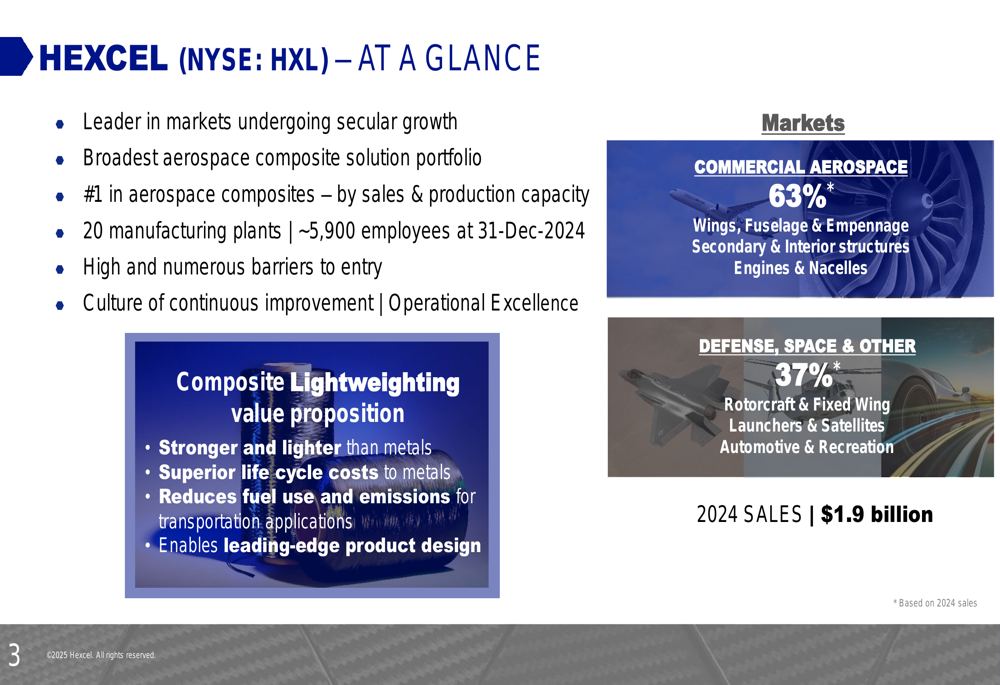
Strategic Initiatives
Hexcel’s core strategy centers on its leadership in advanced composite materials that enable lighter, stronger, and more fuel-efficient aircraft. The company emphasizes its vertically integrated product range spanning from raw materials to fly-away parts, including carbon fibers, reinforcement fabrics, resins, prepregs, honeycomb core, and engineered products.
A key competitive advantage highlighted in the presentation is the superior performance of composite materials compared to traditional metals. According to Hexcel, carbon fiber is 5x stronger and 30% lighter than aluminum, providing significant benefits for aircraft performance, fuel efficiency, and emissions reduction.
The following chart illustrates the strength and weight advantages of carbon fiber compared to traditional materials:
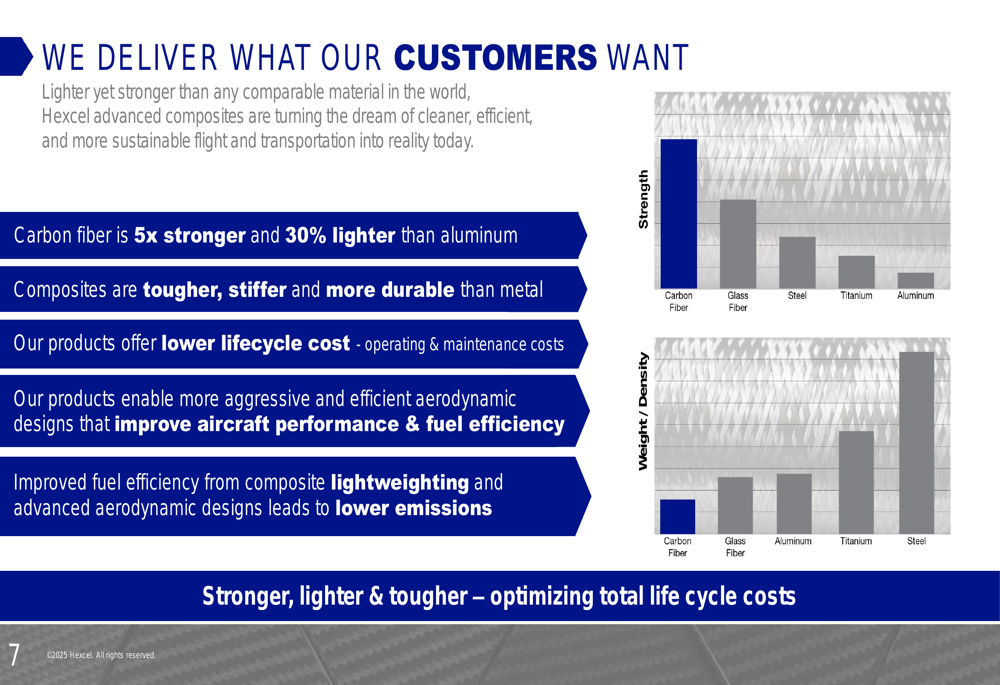
The company’s presentation demonstrates how composite materials have progressively penetrated aircraft construction over the decades, from just 5% glass prepregs in secondary structures during the 1970s-1980s to over 50% in the latest generation widebody aircraft. This secular trend is expected to continue, with Hexcel projecting over 60% composite content in future platforms.
As shown in this detailed breakdown of composite penetration across aircraft generations:
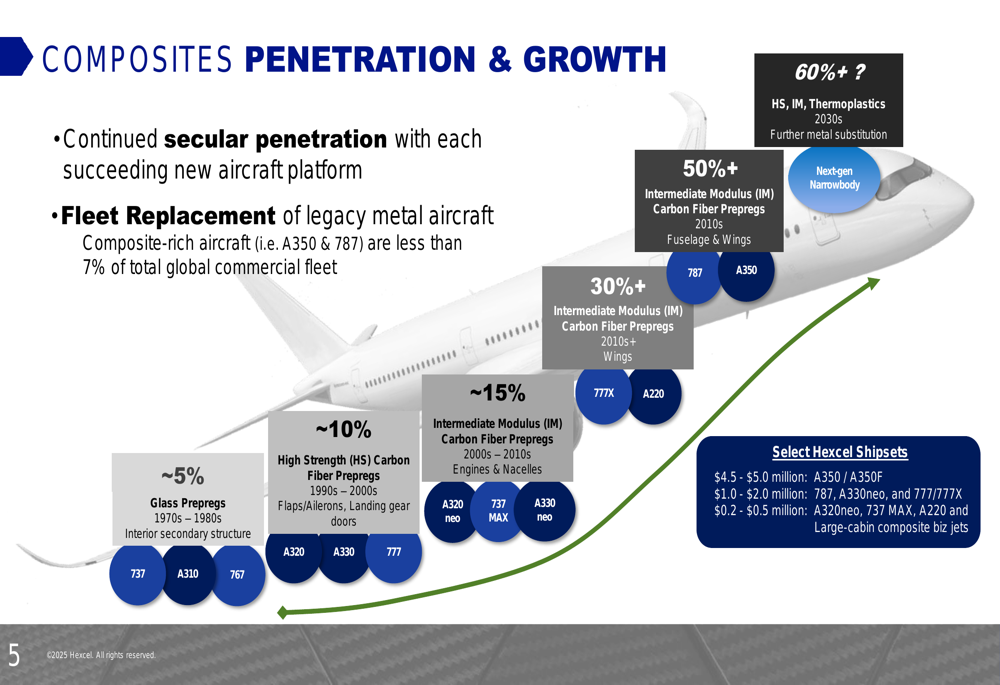
Detailed Financial Analysis
Hexcel’s financial performance shows a strong recovery trajectory from 2020 through 2024. Sales grew from $1.26 billion in 2020 to $1.98 billion in 2024, while adjusted operating income increased from $72 million to $236 million during the same period. Adjusted diluted EPS improved from $0.25 in 2020 to $2.03 in 2024, and return on invested capital rose from 2.3% to 8.7%.
The following chart details this financial recovery and growth:
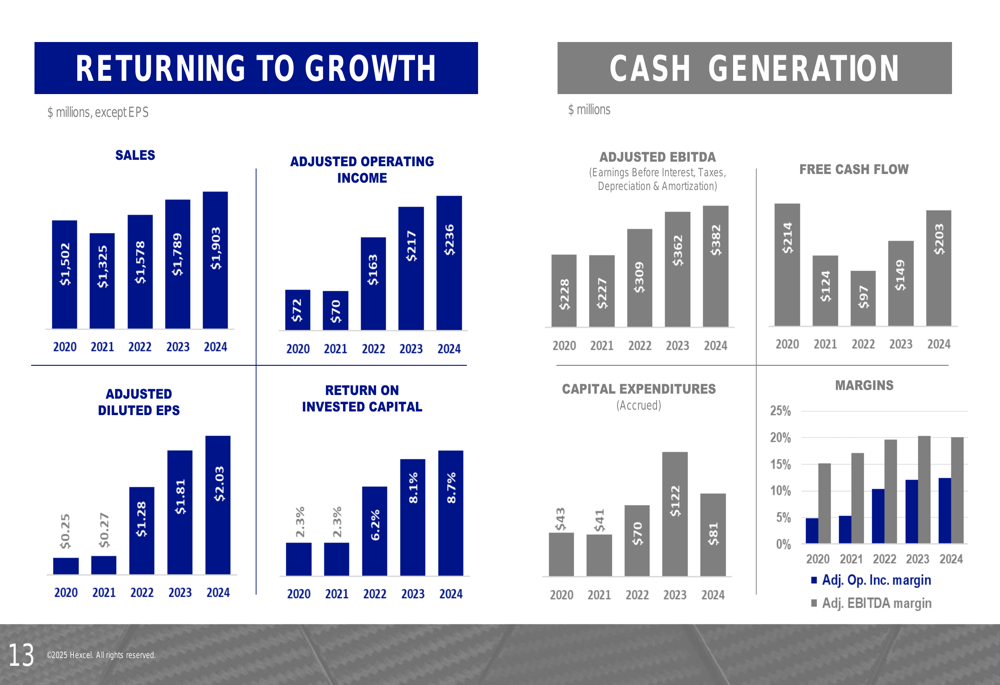
However, this positive multi-year trend contrasts with recent performance. In Q1 2025, Hexcel reported EPS of $0.37, missing the forecasted $0.43, while revenue came in at $456.5 million, below the expected $480.53 million. The company’s commercial aerospace segment saw a 6.3% year-over-year decrease in Q1, attributed to reduced production rates from major clients like Boeing (NYSE:BA).
For 2025, Hexcel has provided the following guidance:
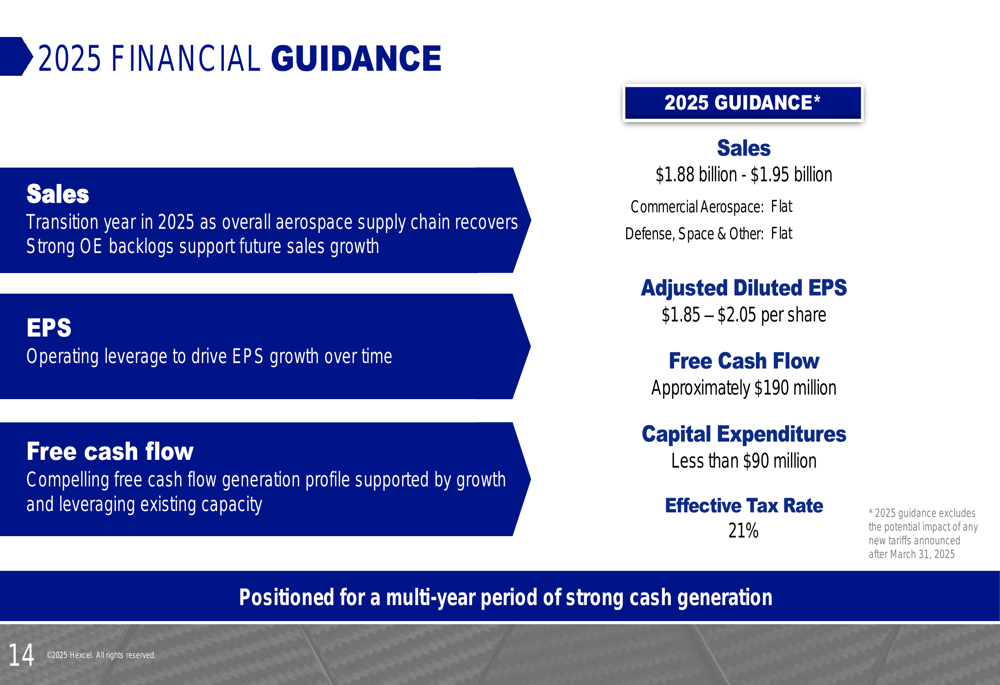
This guidance represents a downward revision, with the company reducing its 2025 sales forecast by $85 million, according to the Q1 earnings report. The flat projections for both Commercial Aerospace and Defense, Space & Other segments reflect ongoing challenges in production ramp-ups at major aerospace OEMs.
Competitive Industry Position
Despite near-term headwinds, Hexcel’s presentation emphasizes strong long-term market fundamentals. The company highlights substantial backlogs at Airbus and Boeing, representing approximately $10 billion in future sales to Hexcel. Additionally, a 20-year market demand forecast projects 42,738 new aircraft deliveries, with 47% for fleet replacement and 53% for fleet growth.
The following chart illustrates key commercial aerospace growth drivers:

Hexcel’s position across various commercial aerospace platforms is detailed in the presentation, with shipset values ranging from $0.2-0.5 million for narrowbody aircraft like the A320neo and 737 MAX to $4.5-5.0 million for the A350/A350F. The company also highlights the relationship between production rates and revenue potential across platforms.
As shown in this visualization of commercial aerospace platforms and their contribution:
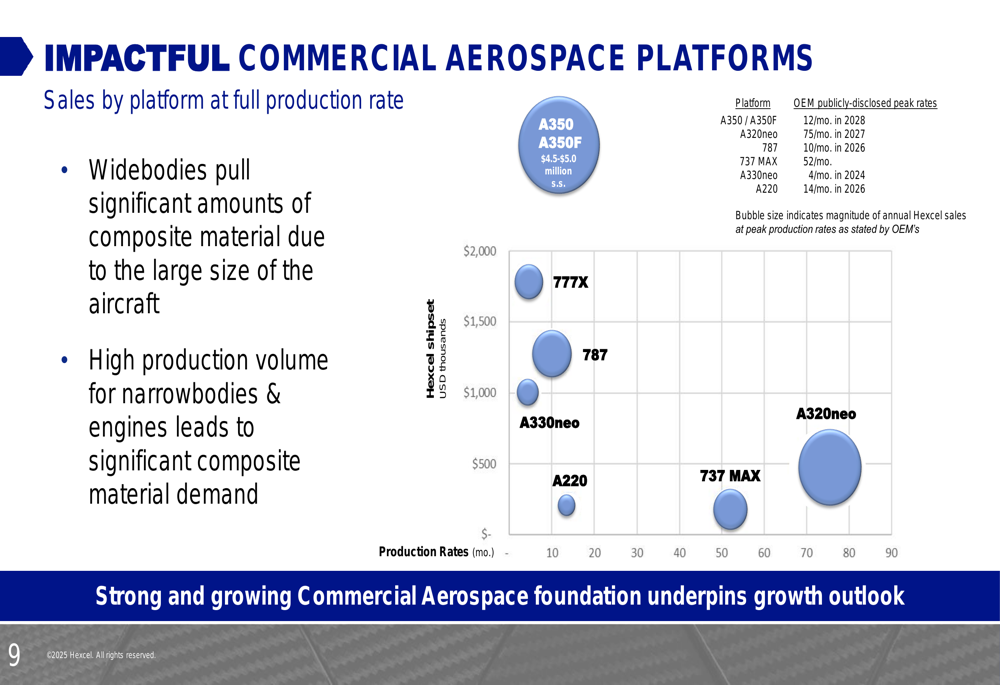
In the defense sector, Hexcel maintains a diverse portfolio with over 100 different programs globally. Key platforms include the F-35, CH-53K, A400M, and Black Hawk, with shipset values ranging from $0.2 million to $3.5 million. The presentation notes that rotorcraft represent approximately 40% of defense and space sales, with replacement blades providing recurring revenue based on fleet utilization.
Forward-Looking Statements
While Hexcel’s presentation outlines a positive long-term growth trajectory, recent earnings results suggest more immediate challenges. CEO Tom Dentely acknowledged in the Q1 earnings call that "2025 is turning out to be another year in which production rate increases for commercial aircraft will not meet initial expectations."
The company faces several near-term headwinds, including:
1. Supply chain disruptions affecting production schedules
2. Tariff-related costs impacting quarterly earnings by $3-4 million
3. Slower-than-expected recovery in commercial aerospace production
4. Potential foreign exchange volatility affecting international sales
Despite these challenges, Hexcel maintains that it is "well positioned to generate significant future cash flows as the commercial OEMs ramp up production." The company expects margin improvements by the fourth quarter of 2025 and into 2026, driven by operational efficiencies and strategic initiatives.
The presentation concludes with key investment rationales, emphasizing Hexcel’s leadership in attractive markets, focus on lightweighting for emissions reduction, culture of innovation, operational excellence, and strong investment fundamentals. However, investors will likely remain cautious until the company demonstrates its ability to navigate the current production challenges and return to its growth trajectory.
Full presentation:
This article was generated with the support of AI and reviewed by an editor. For more information see our T&C.
